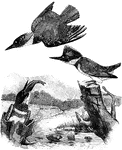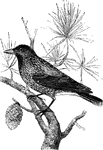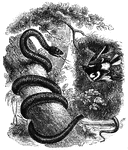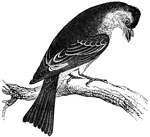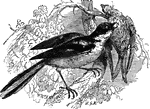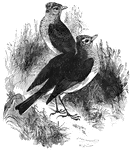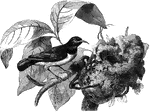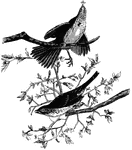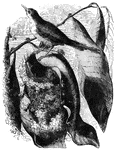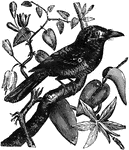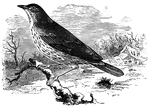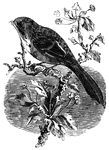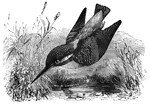
European Kingfisher
Found throughout Middle Europe, the European Kingfisher is a solitary bird that inhabits wet areas,…
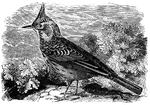
Crested Lark
Feeding mostly on worms and grain, the crested lark frequents Northern Europe i nthe summer, and Southern…

Shore Lark
Found in the north of Europe and Asia, specimens of the shore-lark have been ound as far south as France…

Common Linnet of Europe
The common linnet of Europe is a small, active bird that feeds primarily on seeds.
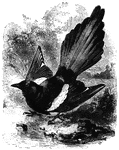
Magpie
The magpie builds its nest in a high tree or a lofty hedge. It is omnivorous, but prefers meat, such…
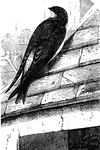
European House Martin
The European house-martin, which has an affinity for living in the vicinity of man.

Meadowlark
Known in Virginia as the old-field lark, the meadow-lark is a migratory bird that feeds on insects and…
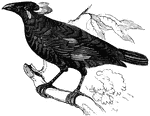
Mino
Found in Java and Sumatra, the mino-bird posses a remarkable ability to replicate human speech.
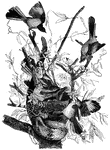
Mockingbirds Attacking a Rattlesnake
A flock of mocking-birds attacking a rattlesnake in a tree, which was threatening a nest.
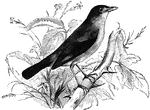
Nightingale
The nightingale is renowned for its song. Its name is derrived from the Saxon meaning night-singer.

Common European Nuthatch
A small, omnivorous bird, which gets its name from the hatches or hammerings it leaves on nuts.
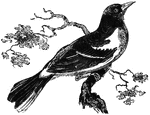
Baltimore Oriole
Familiar in orchards of the United States, the Baltimore oriole is also known as the golden oriole and…
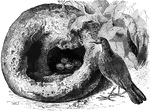
Hornero Ovenbird
The horneo oven-bird, which builds its nest out of clay, straw, and dried vegetation.
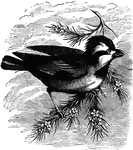
Crested Pardalotte
Usually living around small mountain streams, large spiders have been known to attack and eat the vrested…
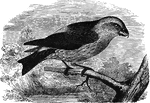
Crossbill Parrot
Somewhat larger than the common cross-bill, the parrot cross-bill largely resembles its habits.

Passeres
An assortment of passeres, one order of birds. The legs, feet, and talons are generally smaller than…
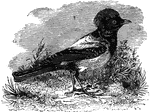
Rose-Colored Pastor
Resembling a starling, the rose-colored pastor can often be found living in the vicinity of livestock,…
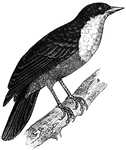
Bloody Pavao
The bloody pavao (coracina scutata) is a mostly black bird, which gets its name from the blood…
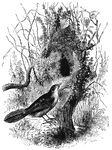
Pinc-Pinc
Found in South Africa, the pinc-pinc is about the size of a wren, and is named after its distinctive…

Meadow Pipit
Also known as the titlark, the meadow pipit prefers to live on steep and arid slops, subsisting on a…
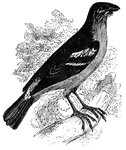
Chilian plant-cutter
The Chilian plant-cutter frequents the wooded parts of the country, where they feed on buds, fruits…

Fork-Tailed Psalurus
Native to South America, the males of this species are known for their pair of prominent tail feathers.
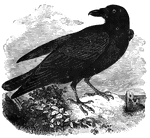
Raven
The raven has a broat palate, its diet including worms, brubs, reptiles, birds' eggs, fish, and shell-fish.

Black Redstart
A black redstart perched on a branch in front of a stone building. It greatly resembles the redstart.
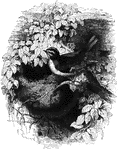
Golden-Crested Regulus
Also known as the kinglet, the golden-crested regulus is found throughout Europe and is noted for its…

European Robin Redbreast
Found in the temperate regions of Europe, the robin redbreast can often be found around homes.
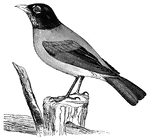
American Robin
The American Robin (known as the migratory thrush among naturalists) feeds on small insects and various…
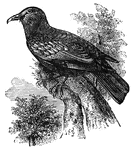
Common Roller
The common roller, which subsists on a diet of fruits and insects. It builds its nests in the holes…
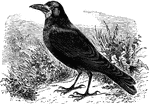
Rook
Greatly resembling the common crow, the rook is approximately nineteen inches in length and feeds on…

Magpie Shrike
Found in Guiana and Brazil, this shrike draws its name from its resemblence to the magpie.
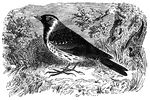
Common Snowbird
Found as far north as Greenland, the common-snow bird migrates as far south as Virginia in the winter.

Common Sparrow of Europe
Often found among human settlement, the common sparrow of Europe's diet consists of seeds, insects,…
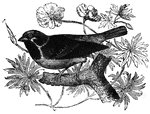
Wood Sparrow
Somewhat aloof from human habitiation, the wood-sparrow can often be seen mingline with other sparrow…
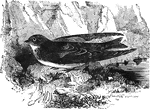
Bank Swallow
The bank swallow (also known as the sand martin) lives in large communities, often of several hundred…
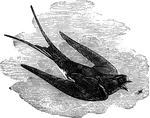
Common European Swallow
The common European swallow, which averages approximately six inches in length. This migratory bird…
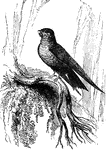
Esculent Swallow
The esculent swallow's nest is prized among the Chinese as a delicacy. It is native to many parts of…
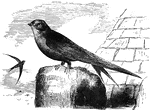
Common European Swift
This swift prefers to build its nest under the eaves of houses, in holes around steeples, in old towers,…
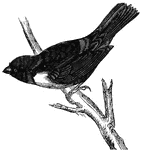
Scarlet Tanager
The scarlet tanager (also known as the black-winged summer redbird, or fire bird) feeds on insects,…
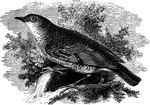
Golden Thrush
Also known as White's thrush, the golden thrush is native to Japan and Savabut migrates to Southern…

Red-Wing Thrush
The red-wing thrush migrates from the north to the south of Europe in the winter, feeding on worms and…
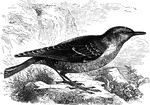
Rock Thrush
Inhabiting the higher reaches of Southern Europe, the rock thrush descends to lower altitudes during…
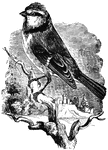
Blue Tit
Commonly found throughout Europe, the blue titmouse is known for destroying the buds of flowers, and…
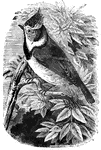
Crested Tit
The crested tit prefers the colder climes of Northern Europe, being common in Denmark, Sweden, Russia,…
